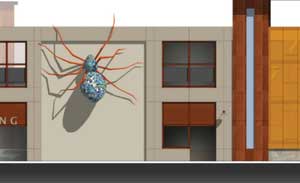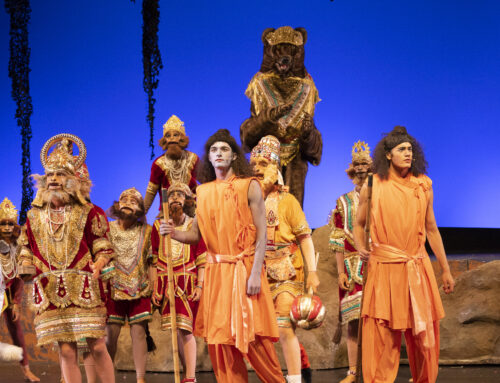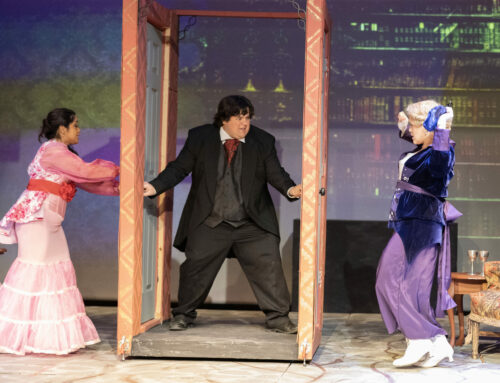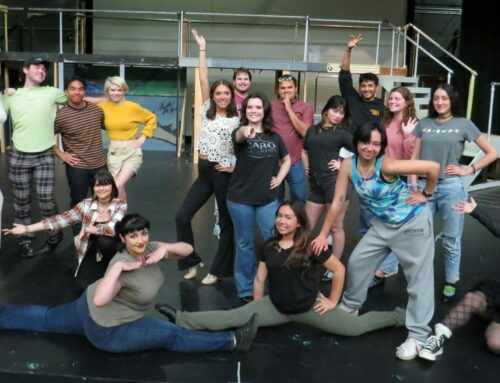Published in the March 4 – 17, 2015 issue of Morgan Hill Life
Regardless of the project, there will always be someone who is unhappy with what is offered as artistic decoration of a community building or street to enhance its visual impact on a neighborhood or business district. This was the case in the Northern California city of Redding 11 years ago when it opened its Sundial Bridge for pedestrian and bicyclist traffic spanning 700 feet across the Sacramento River. The city had budgeted $2 million to build a “folksy” covered bridge, but after the design was revised by Spanish neofuturist architect Santiago Calatra, the cost went up to $23.5 million. Much of the funding came from Redding’s McConnell Foundation, but still some citizens protested, desiring something less daring.
The outcome of Calatra’s work is a strikingly graceful span instead of a staid and boring covered bridge. The Sundial Bridge now serves as an iconic symbol of Redding. It brings tens of thousands of visitors every year to see the city’s artistic wonder. Redding’s city manager said the bridge every year generates millions of tourism dollars for the city.
Morgan Hill is now going through a debate about a controversial work of public art. The Morgan Hill City Council Feb. 4 unanimously voted to approve the design for the $12 million Fourth Street Garage, which will be built on part of the former Sunsweet cannery property.
The four-level structure will include two large-scale public art works created by Napa-based artist Gordon Huether. One will be a three-story glass design of Morgan Hill’s famous poppy jasper gemstone which will dazzle the eyes with swirls of vivid reds, oranges and yellows. This art has been budgeted into the cost of the building at $225,000. The second work is a giant 12-foot spider, made up of hundreds of vintage motorcycle and car headlights. It will appear to crawl up the wall. The headlights will feature LED bulbs which at night will illuminate the eight-legged sculpture. Paying homage to the tarantula spiders who dwell in nearby Henry W. Coe State Park, this art piece has been budgeted into the cost of the garage at $200,000.
Apparently, there are quite a few residents of Morgan Hill with a bad case of arachnophobia. This eight-legged critter “bugs” many of our citizens so much that local resident Johanna Cheong started an online petition to encourage the city council to stop Huether’s giant spider invasion of our downtown.
The fact that the spider is generating so much heated discussion indicates the project just might be a success in creating an iconic image for Morgan Hill’s downtown. Controversy in art can be a good thing for a community, engaging people to participate in the renaissance of our downtown. We’re not talking about a Robert Mapplethorpe or Damien Hirst level of controversy here designed to provoke outrage. We’re talking about a whimsical spider sculpture that will no doubt be popular with families who will find it fun — and it might get kids interested in learning about the fascinating world of entomology.
Who knows? Perhaps when the spider is released for public viewing when the garage is opened (expected late this year), it might, like Redding’s Sundial Bridge, bring considerable media attention to downtown Morgan Hill. That in turn might encourage people from Silicon Valley and other regions surrounding our community to pay us a friendly visit — and spend tourism dollars dining in our restaurants and shopping in our stores.
The city promotes art elsewhere in our downtown. Last year, in connection with its Creative Placemaking program, the city provided $40,000 in mini-grants to encourage residents to come up with art ideas. The submissions were originally meant to be on display for six months, but the concepts were so good the city decided to make several of them permanent. These include a family of bronze deer that will grace the Monterey Road median and a ceramic basket of grapes at Third Street and Monterey Road that pays homage to our wine heritage.
Downtown already has a running start in public art. We enjoy murals on the Second Street side of the South Valley Bikes Building and along the Tryst Building pedestrian way that convey Morgan Hill’s history and community spirit. And the excellent “Waiting for the Train” sculpture by local artist Marlene Amerian on the corner of Depot and Third streets suggests the family spirit of Morgan Hill as a bronze sculpture of our town’s namesake Hiram Morgan Hill stands alongside his wife and daughter.
Public art promotes a sense of place in a community. The arts ennoble and inspire people’s humanity, fostering creativity and beauty in a public venue. The arts help us express our values and build bridges, bringing us together regardless of our culture or ethnicity. We encourage our community to support daring works of public arts to add to our downtown’s renaissance.







